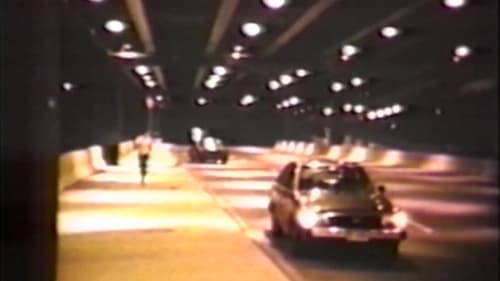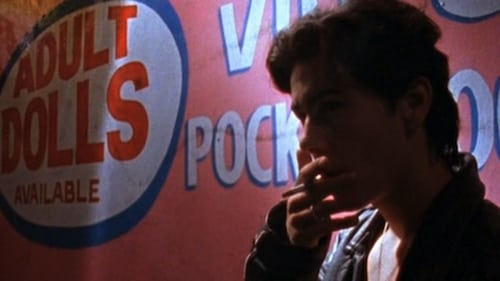
Roko Belic
Nascimento : 1971-09-08, Seattle, Washington
História
Best known for his emotionally powerful films that take viewers to exotic parts of the globe, director Roko Belic was born in 1971 in Seattle to Czechoslovakian and Yugoslavian parents. He grew up in the Chicago suburb of Evanston, Illinois. During his childhood, his mother used a wrench to lock a broken dial on the family TV to the local PBS channel. Belic became enchanted with non-fiction programs that gave him a “window to the world” and his passion for film was born. His first film-making experience was in third grade with his brother, Adrian, when they borrowed a super-8 movie camera from their parents. Belic attended the University of California at Santa Barbara, where he studied studio arts and foreign languages. During college, he took a year away from his studies to travel around the world among the cultures and people that would eventually become the inspiration for his work. Shortly after graduation, Belic and his brother founded the film production company Wadi Rum Films.

"Tarantella" was an early Super 8 short film directed by Christopher Nolan with his childhood friend Roko Belic. It was made in 1989 while Nolan was studying at University College London. The film aired on "Image Union," a PBS programme in Chicago. It is about the suffering of a young man while he has nightmare about spiders and demons.

Producer
"Tarantella" was an early Super 8 short film directed by Christopher Nolan with his childhood friend Roko Belic. It was made in 1989 while Nolan was studying at University College London. The film aired on "Image Union," a PBS programme in Chicago. It is about the suffering of a young man while he has nightmare about spiders and demons.

Editor
"Tarantella" was an early Super 8 short film directed by Christopher Nolan with his childhood friend Roko Belic. It was made in 1989 while Nolan was studying at University College London. The film aired on "Image Union," a PBS programme in Chicago. It is about the suffering of a young man while he has nightmare about spiders and demons.

Director of Photography
"Tarantella" was an early Super 8 short film directed by Christopher Nolan with his childhood friend Roko Belic. It was made in 1989 while Nolan was studying at University College London. The film aired on "Image Union," a PBS programme in Chicago. It is about the suffering of a young man while he has nightmare about spiders and demons.

Writer
"Tarantella" was an early Super 8 short film directed by Christopher Nolan with his childhood friend Roko Belic. It was made in 1989 while Nolan was studying at University College London. The film aired on "Image Union," a PBS programme in Chicago. It is about the suffering of a young man while he has nightmare about spiders and demons.

Director
"Tarantella" was an early Super 8 short film directed by Christopher Nolan with his childhood friend Roko Belic. It was made in 1989 while Nolan was studying at University College London. The film aired on "Image Union," a PBS programme in Chicago. It is about the suffering of a young man while he has nightmare about spiders and demons.

Director
Trust Me uses stories, facts and experts to explain how our lack of media literacy is hurting us and how the media is negatively affecting our perspective of the world. True stories of how mis-information can result in real problems are meant to provoke thought and action in viewers.

Writer
Witness all five Batmobiles together for the first time in history. Dive deep into every aspect of the most awe-inspiring weapon in Batman’s arsenal as you journey through the birth and evolution of this technological marvel and cultural icon

Director
Witness all five Batmobiles together for the first time in history. Dive deep into every aspect of the most awe-inspiring weapon in Batman’s arsenal as you journey through the birth and evolution of this technological marvel and cultural icon

Producer
Happy é um documentário de 2011 dirigido, escrito e co-produzido por Roko Belic. Ele explora a felicidade humana por meio de entrevistas com pessoas de todas as esferas da vida em 14 países diferentes, tecendo as mais novas descobertas da psicologia positiva. O diretor Roko Belic foi originalmente inspirado para criar o filme depois que o produtor/diretor Tom Shadyac mostrou a ele um artigo no New York Times intitulado "Uma Nova Medida de Bem-Estar de um Pequeno Reino Feliz" . O artigo classifica os Estados Unidos como o 23º país mais feliz do mundo. Shadyac então sugeriu que Belic fizesse um documentário sobre a felicidade. Belic passou vários anos entrevistando mais de 20 pessoas, desde os principais pesquisadores da felicidade a um motorista de riquixá em Kolkatta, uma família que vive em uma "comunidade de co-habitação" na Dinamarca, uma mulher que foi atropelada por um caminhão, um pescador cajun e mais.

Writer
Happy é um documentário de 2011 dirigido, escrito e co-produzido por Roko Belic. Ele explora a felicidade humana por meio de entrevistas com pessoas de todas as esferas da vida em 14 países diferentes, tecendo as mais novas descobertas da psicologia positiva. O diretor Roko Belic foi originalmente inspirado para criar o filme depois que o produtor/diretor Tom Shadyac mostrou a ele um artigo no New York Times intitulado "Uma Nova Medida de Bem-Estar de um Pequeno Reino Feliz" . O artigo classifica os Estados Unidos como o 23º país mais feliz do mundo. Shadyac então sugeriu que Belic fizesse um documentário sobre a felicidade. Belic passou vários anos entrevistando mais de 20 pessoas, desde os principais pesquisadores da felicidade a um motorista de riquixá em Kolkatta, uma família que vive em uma "comunidade de co-habitação" na Dinamarca, uma mulher que foi atropelada por um caminhão, um pescador cajun e mais.

Director
Happy é um documentário de 2011 dirigido, escrito e co-produzido por Roko Belic. Ele explora a felicidade humana por meio de entrevistas com pessoas de todas as esferas da vida em 14 países diferentes, tecendo as mais novas descobertas da psicologia positiva. O diretor Roko Belic foi originalmente inspirado para criar o filme depois que o produtor/diretor Tom Shadyac mostrou a ele um artigo no New York Times intitulado "Uma Nova Medida de Bem-Estar de um Pequeno Reino Feliz" . O artigo classifica os Estados Unidos como o 23º país mais feliz do mundo. Shadyac então sugeriu que Belic fizesse um documentário sobre a felicidade. Belic passou vários anos entrevistando mais de 20 pessoas, desde os principais pesquisadores da felicidade a um motorista de riquixá em Kolkatta, uma família que vive em uma "comunidade de co-habitação" na Dinamarca, uma mulher que foi atropelada por um caminhão, um pescador cajun e mais.

Cinematography
I AM is an utterly engaging and entertaining non-fiction film that poses two practical and provocative questions: what’s wrong with our world, and what can we do to make it better? The filmmaker behind the inquiry is Tom Shadyac, one of Hollywood’s leading comedy practitioners and the creative force behind such blockbusters as “Ace Ventura,” “Liar Liar,” “The Nutty Professor,” and “Bruce Almighty.” However, in I AM, Shadyac steps in front of the camera to recount what happened to him after a cycling accident left him incapacitated, possibly for good. Though he ultimately recovered, he emerged with a new sense of purpose, determined to share his own awakening to his prior life of excess and greed, and to investigate how he as an individual, and we as a race, could improve the way we live and walk in the world.

Director
Can the dream world be a fully functional parallel reality? Joseph Gordon-Levitt and leading scientists take you to the cutting edge of dream research in this documentary produced for Christopher Nolan's Inception.

Editor
Blind blues musician Paul Pena is perhaps best known for his song "Jet Airliner". In 1993, Pena heard Tuvan throat singing over his shortwave radio and subsequently taught himself how to reproduce these extraordinary sounds. This documentary follows him to Tuva, where he takes part in a throat singing competition. Languages featured in the film include English, Russian and Tuvan.

Cinematography
Blind blues musician Paul Pena is perhaps best known for his song "Jet Airliner". In 1993, Pena heard Tuvan throat singing over his shortwave radio and subsequently taught himself how to reproduce these extraordinary sounds. This documentary follows him to Tuva, where he takes part in a throat singing competition. Languages featured in the film include English, Russian and Tuvan.

Writer
Blind blues musician Paul Pena is perhaps best known for his song "Jet Airliner". In 1993, Pena heard Tuvan throat singing over his shortwave radio and subsequently taught himself how to reproduce these extraordinary sounds. This documentary follows him to Tuva, where he takes part in a throat singing competition. Languages featured in the film include English, Russian and Tuvan.

Director
Blind blues musician Paul Pena is perhaps best known for his song "Jet Airliner". In 1993, Pena heard Tuvan throat singing over his shortwave radio and subsequently taught himself how to reproduce these extraordinary sounds. This documentary follows him to Tuva, where he takes part in a throat singing competition. Languages featured in the film include English, Russian and Tuvan.

Delivery Boy
This film involves three interwoven stories with the only seeming connection being the delusions of the involved leads. In the first element of the film, a hot-tempered world tennis star loses endorsement contracts when the press outs him even though he claims the report is false. In the second, a talent-less woman struggles to make it in the world of fashion design or the music video business. In the last, an animal activist runs a dog-adoption agency and has an imaginary friend who appears in a St. Bernard suit.

Tommy
O roteiro semidocumental e construído em 15 partes centra-se nos depoimentos e estórias de vida de seis adolescentes, quatro deles homossexuais masculinos e as outras duas participantes de um "típico casal lésbico".





